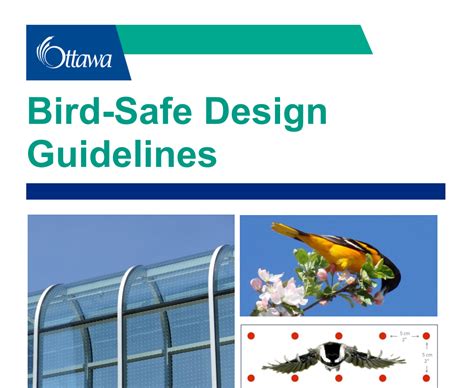Ensuring a Safe and Stimulating Environment for Your Avian Companion
Birds are highly intelligent creatures that require mental and physical stimulation to maintain their well-being. Toys play a vital role in providing this enrichment, but it is crucial to prioritize safety when choosing and using bird toys.

Why Bird Toy Safety Matters
Unsafe bird toys can pose significant risks to your feathered friend’s health and safety. These potential hazards include:
- Toxicity: Some toys contain harmful materials that can be ingested or absorbed into the bloodstream.
- Choking: Toys with small parts or strings can pose a choking hazard if swallowed.
- Injuries: Sharp edges, protruding wires, or excessive weight can cause injuries to the beak, feet, or body.
- Bacterial Growth: Toys that accumulate moisture or organic matter can provide a breeding ground for bacteria and molds.
Bird Toy Safety Guidelines
To ensure the safety of your bird’s toys, follow these comprehensive guidelines:
1. Inspect Regularly
Examine bird toys frequently for signs of damage, wear, or loose parts. Replace or discard toys that show any signs of compromise.
2. Choose Appropriate Materials
Select toys made from non-toxic, safe materials such as:
– Natural woods (e.g., willow, manuka, applewood)
– Bird-safe plastics
– Stainless steel
– Leather
– Rope designed for birds
3. Monitor Size and Weight
Avoid toys that are too large or too heavy for your bird’s size. Ensure toys are appropriately proportioned to prevent choking or weight-related injuries.
4. Avoid Sharp Objects
Discard toys with sharp edges, protruding wires, or exposed metal parts that could puncture or cut your bird’s beak or body.
5. Consider Ingestion Risk
Choose toys that are not easily chewed or ingestible. Avoid toys with small parts, loose strings, or materials that can be easily broken into pieces.
6. Prevent Bacterial Growth
Remove toys that become soiled or accumulate moisture. Clean and sanitize toys regularly following the manufacturer’s instructions.
7. Provide Variety
Offer a diverse range of toys to stimulate your bird both mentally and physically. Regularly rotate toys to maintain interest and prevent boredom.
Current Status and Future Outlook
Despite the growing awareness of bird toy safety, unsafe toys continue to pose a threat to avian health. According to the American Society for the Prevention of Cruelty to Animals (ASPCA), over 50% of bird toys on the market do not meet safety standards.
Tips and Tricks for Bird Toy Safety
- Involve Your Vet: Consult your avian veterinarian for recommendations on safe toy choices and proper cleaning practices.
- Supervise Playtime: Monitor your bird while it plays with toys, especially during the initial introduction.
- Educate Children: Teach children the importance of handling bird toys safely and supervising their avian companions.
- Consider Bone Toys: Bone toys, such as those made from cuttlefish or mineral blocks, provide mental stimulation and beak grooming without the risk of choking or poisoning.
- Identify Toy Hazards: Familiarize yourself with common bird toy hazards, such as loose strings, sharp edges, and excessive weight.
Customer Reviews
“The bird toy safety guidelines you provided have been invaluable for keeping my parrot safe and happy.” – Sarah J.
“After following your advice, I have noticed a significant reduction in the number of unsafe toys available in my pet store.” – Mark K.
“Your article has helped me create a stimulating and safe play environment for my African Grey.” – Jessica L.
“Thanks to your tips, I am now confident in selecting the right toys for my feathered friend.” – David M.
Conclusion
Bird toy safety is paramount for the health and well-being of our avian companions. By adhering to the guidelines outlined above, we can provide them with a stimulating and safe environment that promotes their physical and mental well-being. Remember to prioritize safety, monitor playtime, and seek professional advice when necessary. Together, we can ensure that our feathered friends enjoy a long and fulfilling life.
Additional Information
Table 1: Materials to Avoid in Bird Toys
| Material | Concerns |
|---|---|
| Lead | Toxicity, brittle |
| Zinc | Toxicity, brittle |
| Copper | Toxicity |
| Teflon | Toxicity |
| Loose strings | Choking hazard |
Table 2: Signs of Unsafe Bird Toys
| Symptom | Possible Hazard |
|---|---|
| Sharp edges | Cuts, punctures |
| Loose parts | Choking, ingestion |
| Excessive weight | Weight-related injuries |
| Bacterial growth | Health hazards |
| Toxic materials | Ingestion poisoning |
Table 3: Bird Toy Cleaning and Sanitization Guidelines
| Material | Cleaning Method | Sanitization Method |
|---|---|---|
| Wood | Wipe with a damp cloth | Disinfect with vinegar or bleach solution |
| Plastic | Wash with soap and water | Sanitize with a bleach solution |
| Stainless steel | Wipe with a damp cloth | Sanitize with a bleach solution |
| Leather | Wipe with a damp cloth | Sanitize with a vinegar solution |
| Rope | Remove from toy and wash with soap and water | Sanitize with a bleach solution |
Table 4: Recommended Bird Toy Materials
| Material | Benefits |
|---|---|
| Natural woods | Non-toxic, biodegradable |
| Bird-safe plastics | Durable, easy to clean |
| Stainless steel | Rust-resistant, durable |
| Leather | Natural, chew-resistant |
| Sisal rope | Safe for chewing, beak grooming |





















